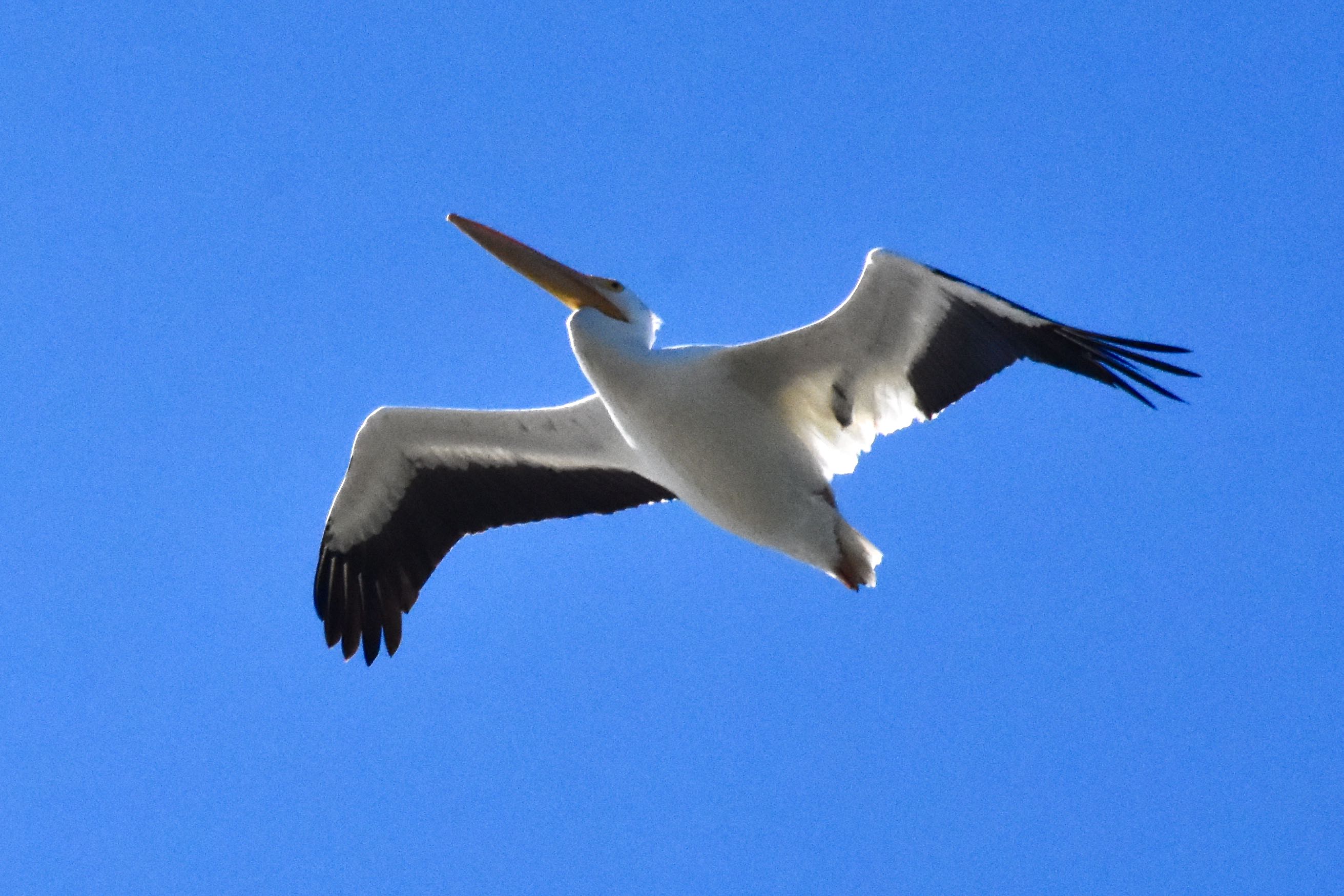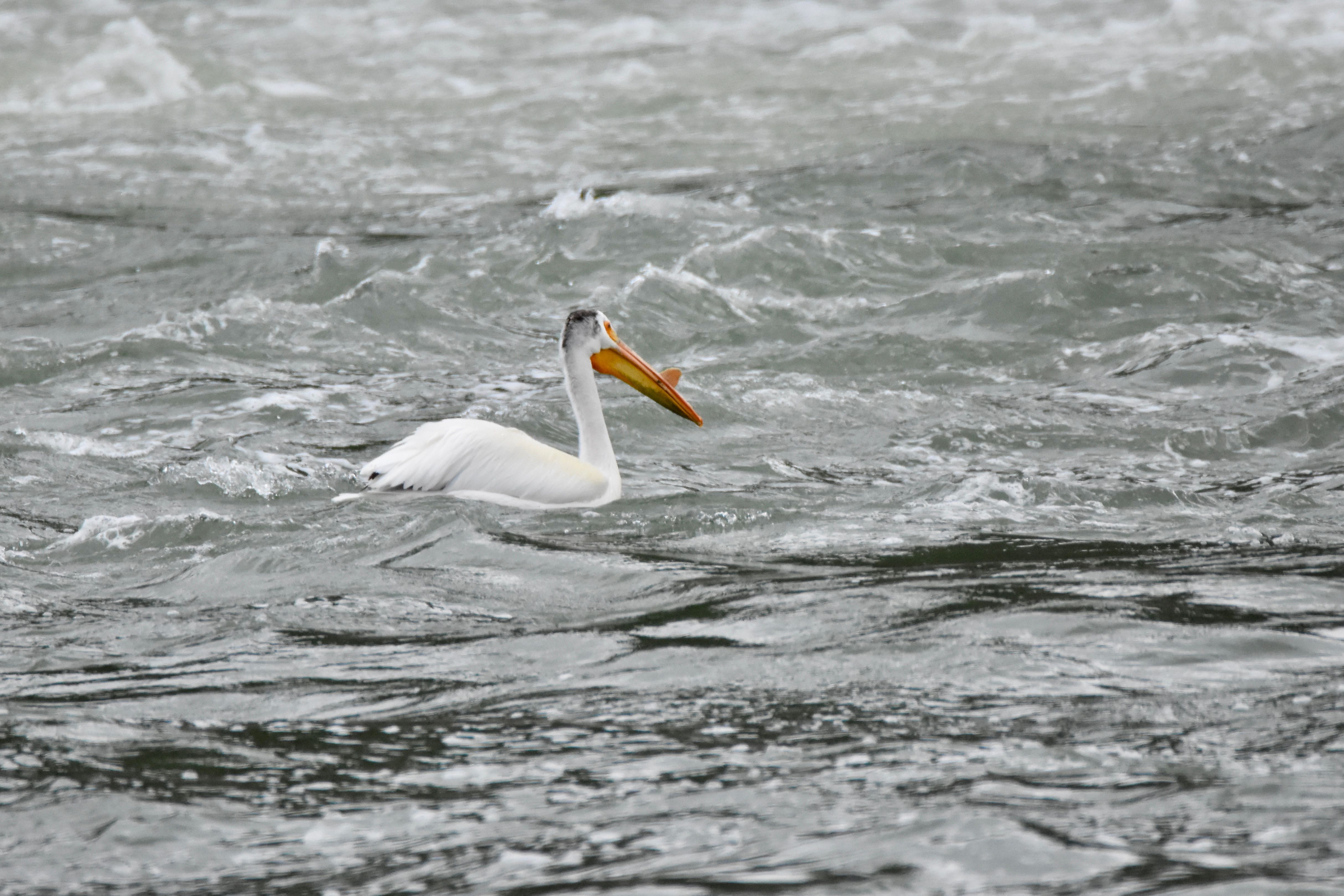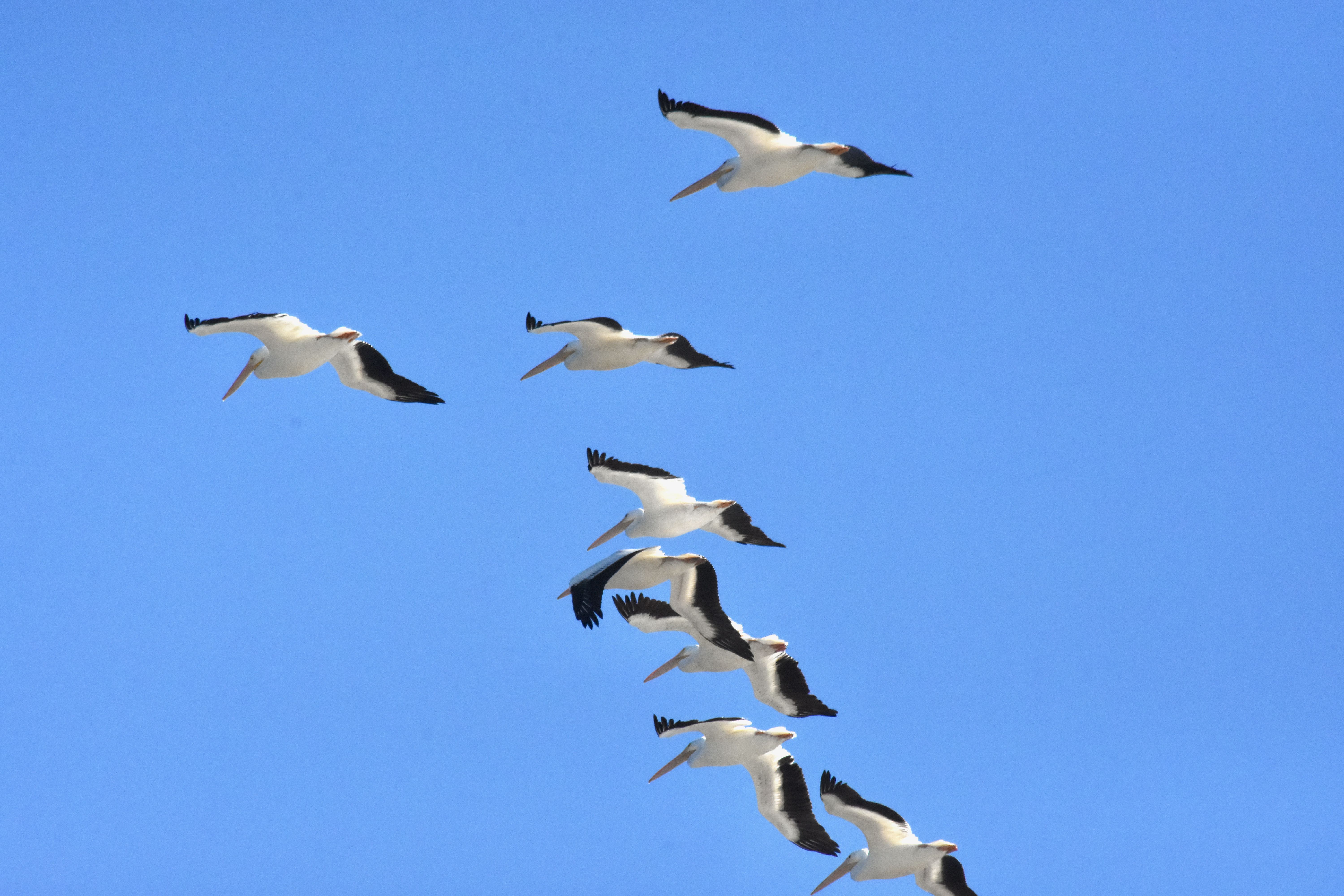
White pelican, photographed at Yellowstone River, Yellowstone National Park, Wyoming in June 2017. Others at Lighthouse Beach Park, Sanibel, Lee County.
The American white pelican, Pelecanus erythrorhynchos, is a much different bird in almost every way imaginable from its brown cousin, the pelican that we generally see year round along South Florida's beaches.
It's bigger, feeds differently and is migratory, some spending summers far inland in the wilds of northern Canada. It's so big that it ranks among North America's largest birds, and among the world's largest flying birds.
White pelicans do live up to their name. They are entirely white — until you see one flying. The feathers on the wings' following edge are black. Did we mention that they are absolutely huge? A white pelican can reach 65 inches in length, with a wingspan that approaches 10 feet. They can weigh as much as 33 pounds, yet they are graceful flyers, able to soar at great heights. By comparison, a brown pelican might approach five feet in length, with a wingspan of about seven feet. Still, a big bird.
White pelicans do share a love of fish with their brown cousins, but they go about catching their prey in entirely different manners. Browns literally dive-bomb into the water from as high as 65 feet to capture their prey.

White pelicans employ a less spectacular style, sitting on the water scooping up fish with their pouched bills. Or they'll dabble duck style, with their heads under water and their butts pointing to the sky. They'll also work collectively to "herd" fish into the shallows where they can be scooped up with relative ease. White pelicans are also opportunistic, taking salamanders, tadpoles and crayfish when abundant.
American white pelicans only spend about half the year here in Florida, arriving in October and departing for points north come March. It's estimated that 1,500 individuals spend the winter somewhere in Florida. They'll also retreat to coastal areas in California, Mexico, Texas and other Gulf Coast states, the Caribbean and Central America. There's a chunk of the population that lives year-round in Texas.
Those that migrate spend their summers in central Canada, through the Great Plains of the United States and in scattered sites throughout throughout western U.S. and Canada. By one estimate, there are something like 60 breeding colonies where the bulk of the population gathers.
Summer habitats include islands in shallow-water lakes and wetlands. White pelicans are ground nesters, and will scrape out a shallow depression in the ground about two feet across and sometimes lined with grass. They'll have one brood a year, with females laying two eggs, which require about a month of incubation before hatching. Usually only one of the two hatchlings survives to adulthood, the other killed by his sibling. At two or three weeks, young pelicans will form groups called creches, where they'll spend the day. Within nine to 10 weeks, they are fully capable flyers. According to Cornell, a young pelican will eat 150 pounds of fish from the time of hatching until he's able to forage on his own.
The American white pelican is a member of Pelecanidae, the pelican family.
The second photo on this page was taken at Wakodahatchee Wetlands near Delray Beach in June 2022, while the photos on the left and right were shot at Lighthouse Beach Park in Sanibel. The middle photo below was shot at the Snake River, Grand Teton National Park in Wyoming.
It's bigger, feeds differently and is migratory, some spending summers far inland in the wilds of northern Canada. It's so big that it ranks among North America's largest birds, and among the world's largest flying birds.
White pelicans do live up to their name. They are entirely white — until you see one flying. The feathers on the wings' following edge are black. Did we mention that they are absolutely huge? A white pelican can reach 65 inches in length, with a wingspan that approaches 10 feet. They can weigh as much as 33 pounds, yet they are graceful flyers, able to soar at great heights. By comparison, a brown pelican might approach five feet in length, with a wingspan of about seven feet. Still, a big bird.
White pelicans do share a love of fish with their brown cousins, but they go about catching their prey in entirely different manners. Browns literally dive-bomb into the water from as high as 65 feet to capture their prey.

White pelicans employ a less spectacular style, sitting on the water scooping up fish with their pouched bills. Or they'll dabble duck style, with their heads under water and their butts pointing to the sky. They'll also work collectively to "herd" fish into the shallows where they can be scooped up with relative ease. White pelicans are also opportunistic, taking salamanders, tadpoles and crayfish when abundant.
American white pelicans only spend about half the year here in Florida, arriving in October and departing for points north come March. It's estimated that 1,500 individuals spend the winter somewhere in Florida. They'll also retreat to coastal areas in California, Mexico, Texas and other Gulf Coast states, the Caribbean and Central America. There's a chunk of the population that lives year-round in Texas.
Those that migrate spend their summers in central Canada, through the Great Plains of the United States and in scattered sites throughout throughout western U.S. and Canada. By one estimate, there are something like 60 breeding colonies where the bulk of the population gathers.
Summer habitats include islands in shallow-water lakes and wetlands. White pelicans are ground nesters, and will scrape out a shallow depression in the ground about two feet across and sometimes lined with grass. They'll have one brood a year, with females laying two eggs, which require about a month of incubation before hatching. Usually only one of the two hatchlings survives to adulthood, the other killed by his sibling. At two or three weeks, young pelicans will form groups called creches, where they'll spend the day. Within nine to 10 weeks, they are fully capable flyers. According to Cornell, a young pelican will eat 150 pounds of fish from the time of hatching until he's able to forage on his own.
The American white pelican is a member of Pelecanidae, the pelican family.
The second photo on this page was taken at Wakodahatchee Wetlands near Delray Beach in June 2022, while the photos on the left and right were shot at Lighthouse Beach Park in Sanibel. The middle photo below was shot at the Snake River, Grand Teton National Park in Wyoming.



